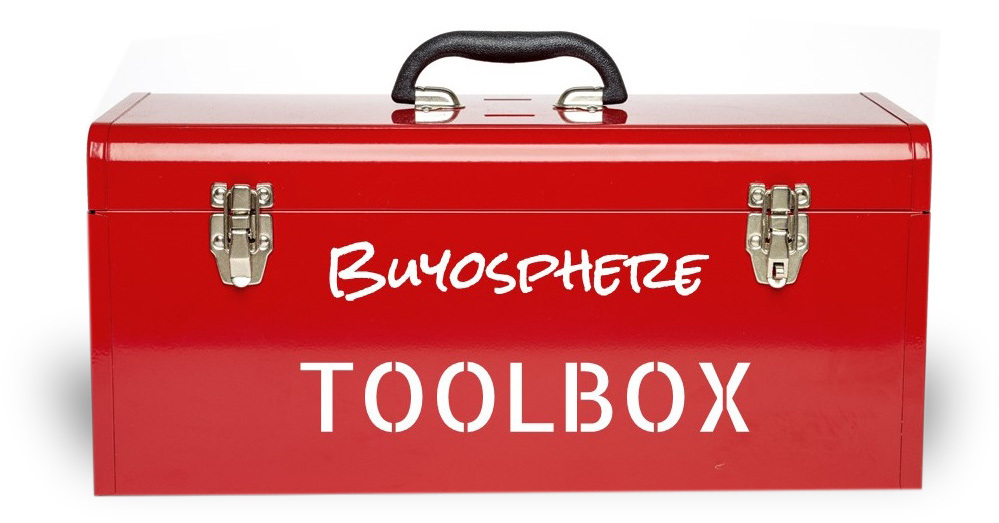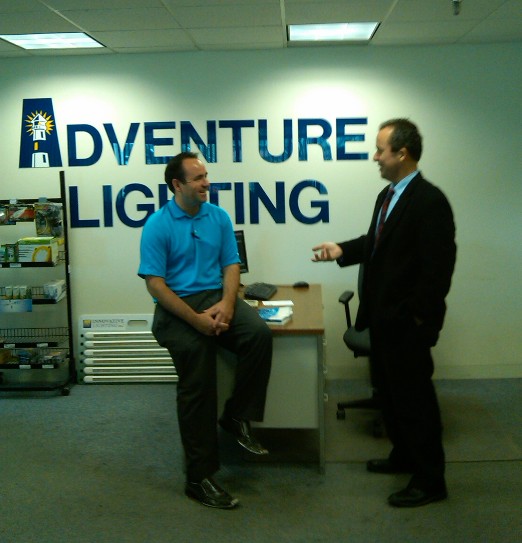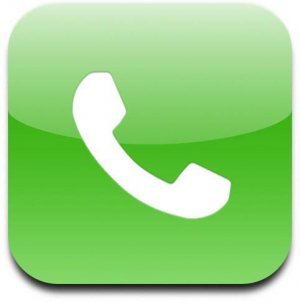Hello shoppers...
What does it take to be great at customer service?
During my six years as a customer service trainer, I've learned that great customer service generally comes from people who are:
1. Happy
2. Empathetic
3. Problem solvers
4. Driven to help people
5. Trained by a customer service trainer, who also wants to be an author when he grows up
With some gentle guidance, positive reinforcement, strong oversight and long-winded training sessions that rival The Reverend Jim Jones' 36 hour marathon diatribes, happy, driven, empathetic problem solvers can become customer service rock stars.
Have you got what it takes to make it in Jonnie's Rock n' Roll Cavalcade of Customer Service All-Stars? Are you smarter than a minor blogger?
Yes, and yes.
To see how much smarter, check out the following test. It is given to all Buyosphere trainees at some point during their training. 300 employees have taken it. 6 have aced it, which is considered passing. All the smarty pants' won money, which means there isn't any to give you if you also get 'em all right.
Just know that, simply by taking it, you shall be rewarded - with the currency of my admiration.
All of the questions and answers are based upon my Pillars of Great Customer Service, and other Buyosphere training elements. Some employees think I wrote some of the questions immediately after falling down a flight of stairs. If you "beg to differ" with any answer and its subsequent justification, let me know. I will weep softy, and only to myself.
The Ultimate Customer Service Test
1. Which one of these is not a Pillar of Great Customer Service? (Check those that apply)
A. Empathize
B. Greet
C. Follow up your shot for the rebound
D. Thank
E. Smile
F. Nurture
G. Shake hands
H. Give samples
ANSWER: A, C, F, G and H.
This is an easy one, if you see that naughty word, "not," hiding in there. "Empathize," "nurture," "shake hands," and "give sample" are all part of great customer service, but they're not official Pillars. "Follow up your shot for the rebound" is a pillar of great basketball, and is being ignored by the Hawkeyes.
2. Which Pillar(s) is/are not listed, above?
_____________________________________________________________________________________
ANSWER: This is a layup: "Engage," "follow up" and "give chocolate."
3. “Surgical shopping” is
A. Shopping for a good surgeon
B. Shopping at a store because it has lower prices
C. Shopping for only what is needed and getting out of a store as fast as possible
D. Cutting through company red tape to talk to a manager
ANSWER: C.
If you chose "shopping for a good surgeon," and happen to be, best of luck, and please avoid using Craigslist. The term "surgical shopping" was coined last year by the media, to describe the growing trend of shoppers avoiding "leisure" shopping, in favor of getting what they need and getting out of the store as fast as possible. That's not good news for retailers, although I didn't hear about much surgical shopping going on in December, when we rediscovered our shopping mojo, and our credit cards. Speaking of which - have you checked your mailbox lately? Me, neither. Me scared...
4. Our left brain controls
A. Our love of shopping
B. Our skills which we have learned
C. Our emotions
D. How fast the hair on the left side of our head, grows
ANSWER: B.
Which side of our brain controls our feelings? Which side controls our ability to process information? This is an easy one to forget. Here's a difficult way to remember. Think of your head as a dinner plate; on the left side is cauliflower and spinach and green beans and brussels sprouts and other foods that should never be served without being smothered in Cheeze-whiz. On the (W)right side of your plate/head is pizza and Doritos and macaroni and cheese and cheeseburgers and candy bars and candy bars and the cheese-whiz.
Now you know.
5. Know that you know what you know, then...
A. Let people know what you don’t know
B. Forget everything you know
C. Let go
D. Worry about what you don’t know
ANSWER: C.
This confusing sentence and concept will be explained in #12.
6. Being ignored by employees while we shop is called
A. Derailing our reality
B. Denying our responsibility
C. Denying our reality
D. Walmart
ANSWER: C
"Denying our reality" is one of the reasons why online shopping has exploded. Why go to the trouble of getting in our cars and driving to a store, where we're likely to be ignored by most of the employees we encounter, when we can bypass that dehumanizing, "cattle-down-a-chute" transactional process altogether, and shop for stuff from the comfort of home, in front of our laptops?
7. An example of an open-ended question is
A. "Have you been helped?”
B. "I’m not sure. I could try to find it for you, if you’d like…?”
C. ”How can I help you?”
D. ”Did you find everything okay?”
ANSWER: C.
Asking open-ended questions - those that require something other than a "yes" or "no" answer - is one of the most important parts of my customer service training. Open-ended questions make the questioner sound like they care more about the answer, and require more thought from the answerer.
8. If a customer asks where something is, the most effective response is
A. ”Let me show you where it is.”
B. ”It’s over in (whichever aisle). Would you like me to show you?”
C. ”I don’t know. You’re so smart, you find it.”
D. ”Did you check in (whichever aisle)?”
ANSWER: A.
Like I tell trainees, don't tell 'em, show 'em.
9. An example of an appropriate salutation is
A. "Whasss uuuuup?”
B. "You look lost.”
C. ”Hi! How are you?”
D. ”What can I get for you?”
ANSWER: C.
Sometimes the employees that I work with, jump to the open-ended "What can I help you with?" question before they've greeted a shopper with a salutation, or anything else. That's understandable, since I constantly stress the importance of asking the open-ended question. I simply remind them that customers are people first, just like they are, so engage them like they would engage anyone else they are meeting for the first time. "What can I get for you?" probably ain't it.
10. Head on a swivel…
A. Look in their general direction, and wait for them to ask a question
B. Look them in the eye, and smile
C. Look out for approaching customers
D. Look at what you’re doing, and don’t look away
ANSWER: B.
This is one of the first concepts employees learn in customer service training. It addresses the problem of denying our reality, outlined in question 6. It acknowledges that employees are very busy people who are asked to do many tasks, but that the most important "task" is to engage customers.
11. A subject you can engage customers about is
A. Why they’re buying so many pizzas
B. Why they’re not smiling
C. The cool tats on their neck
D. Their Christmas plans
ANSWER: D.
In customer service training, I tell employees - particularly those who work at registers - to avoid engaging customers about four things: religion, politics, personal body art/piercings and their food purchases. All four of the above choices would seem, at first glance, to be on the "no ask" list. While this question presents a bit of a conundrum, I pick Christmas as the safest of the four. But Jonnie, doesn't that violate your edict to avoid conversations about religion? No - because some people look at Christmas as having to do with Santa Claus and presents and Christmas trees and holiday specials and fruit cake, and not having to do with the birth of Christ. Besides, it's the only choice that doesn't violate the customer's personal space - always a good call.
12. The more time customers spend in a store
A. The more money they will spend
B. The more likely they will be to run into displays with their cart
C. The less money they will spend
D. The fewer open-ended questions they need to be asked
ANSWER: A.
Sure, "B" might be more likely on certain sides of town, after 11pm. Otherwise, more shopper time spent in stores leads to more shopper money spent at the register.
13. In Triangulation, the person doing the complaining is known as
A. The Secret Shopper
B. The pointy end of the triangle
C. The victim
D. The perpetrator
ANSWER: C.
Triangulation? What are you teaching, Jonnie? Customer service, or trig? Certainly not that second thing, since I flunked every math class I took after 9th grade, and just used "trig" because I can't spell the rest of the word. One of the most destructive forces in the workplace is when co-workers complain to other co-workers, about other co-workers (or family members). This "triangulation" - complaining about someone who has hurt us, to everyone but the person who hurt us - can be a cancer, in both personal and professional relationships. To help dramatize this concept, I describe the following scenario: Your spouse lies to you. You call your mom and complain. You are now engaging in triangulation, by which you are the "victim," complaining to the "hero," or "savior," your mom, about the "perpetrator," your spouse. It's particularly corrosive when the perpetrator finds out. "You went to your mother instead of me?" Now they are the victim and you're the perpetrator. Doesn't that sound like fun??? The lesson: Don't go around the people who hurt you - go to them. And don't be the person who listens to everyone's complaints. Empower others to solve their own problems.
14. Shoppers shop in their
A. I
B. Pants
C. Left-brain
D. R
ANSWER: A.
This can be a challenging concept for some employees to grasp, but when they do, it can truly change their outlook on their relationships, at work and away from it. Simply put, our "I" is our individuality. It's the most selfish part of who we are. It's "me-me-me." It's who we are when no one else is around. Our "R" is our role. It's our title - as "mother," "brother," "manager," "spouse," "friend," "employee," etc. It's the most giving part of who we are. It's who we are to everyone else but ourselves. We shop in our I. We serve in our R. And yes, hopefully we're all also shopping fully clothed.
15. One of the two most important questions that determine every company’s longevity, loyalty and revenue, is
A. ”Did you find everything okay?”
B. ”Will you come back?”
C. ”What else can I help you with?”
D. ”How ‘bout them Cowboys?”
ANSWER: B.
This is, literally, the $1,000,000 retail question. Advertising gets us into a store once, which, frankly, is of almost no benefit to the store. Stores make their money on our return trips, and that is determined by our experience the last time we were there. The 2nd most important question: "Will you tell a friend, and what will you tell them?" In the 21st century, that means telling our "friend(s)," on Facebook, Twitter, txt, blog and via email - including the most (in)famous local email of all.
16. An example of the extra question is
A. "Did you find everything okay?”
B. ”Is there anything else I can get for you?”
C. ”What else can I get for you?”
D. ”Can I get this with extra mayo?”
ANSWER: C.
This is my favorite question in retail. The more questions we ask, the more we appear to want to know about the person we're asking i.e. the more we seem like we care about them. Since all retail is about problem-solving, it makes sense that each question an employee asks, gets them closer to solving the problem the customer brought in with them, to solve. Order-takers say "thank you" after they solve the shopper's first problem. Professionals continue to search for more problems to solve. Staff a store with an army of problem solvers, and you'll rule the business category.
17. The Engagement Pillar has two parts. They are
A. Salutation and open-ended question
B. Smile and greet
C. ”Thanks for shopping with us!” and “Have a great day!”
D. Professional/problem solving, and personal chit-chat
ANSWER: D.
The Engagement Pillar focuses on an employee's professional problem-solving abilities (problems that were uncovered by asking the customer a series of open-ended questions), followed by personal chit-chat with that customer, which knocks down walls that exist between people who have never met (employee and customer).
18. What does question #5 mean?
A. Be confident that you know the skills of your job, and focus on taking care of your customers
B. Do not try to figure out everything at once – one problem at a time
C. Let go of the past, focus on the present, and prepare for the future
D. I’m still working on question number 4, bro
ANSWER: A.
Most of the tasks that employees do to do their jobs, are highly repetitive in nature: clean, file, stock, data entry, schedule, front, fold, ring up, cash out, wash, rinse, repeat. I could blindfold most employees who, after stumbling around a bit, could probably do their jobs with 80% accuracy. By telling employees that they "know what they know what they know, so let go," I'm encouraging them to trust that they can accurately do the task-driven part of their jobs, and then to "let go" of it, to then be able to focus on sharing their warmth and love and compassion and empathy with customers. Anyone can learn how to do most anything in retail. But making people feel taken care of? That's a talent that few possess.
19. Open-ended questions do everything but
A. Get customers to spend more
B. Make customers feel like you care
C. Get customers to think less
D. Help us figure out what the customer really needs
Answer: C.
This is obvious, unless you missed that sneaky "but" hiding at the end.
20. Story problem:
A customer approaches an employee who is stocking in an aisle. The employee looks up, smiles, says “Hi, how are you?” and “What can I get for you?” The customer says they’re looking for asparagus. The employee says, “Let me show you where it is” and takes them to the asparagus. The employee says, “Thank you! Have a great day!” while making eye contact with the customer, who says “I will. You, too!” and turns away.
Is this, according to Buyosphere training, a perfect interaction between an employee and a customer? If not, what's missing?
ANSWER: No.
It's a pretty good interaction, but far from perfect. The employee should have asked the extra question: "What else can I help you with?" The employee should have attempted to up-sell, or what I refer to in training as "up-help.": "Just so you know, we have ribeye steaks on sale for $5.99 a pound, that would be absolutely delicious with that asparagus. I grilled one last night, and it was tender and delicious." The employee could have also engaged in chit-chat: "How was your weekend? Has it stopped snowing yet? Have you been coming into the store for a while?"
How did you do? Do I owe you money?
Jonnie Wright is a customer service evaluator and trainer, professional secret shopper, marketing strategist and host of The Unsecret Shopper Radio Show, Saturday mornings 8-9am, on 1350, KRNT.
 Click to be taken to Jonnie's Facebook page
Click to be taken to Jonnie's Facebook page
 Click to be taken to Jonnie's Twitter page
Click to be taken to Jonnie's Twitter page
 Click to be taken to Jonnie's blog
Click to be taken to Jonnie's blog
 Click to email Jonnie (jonnie@thebuyosphere.com)
Click to email Jonnie (jonnie@thebuyosphere.com)

Open The Buyosphere Toolbox to get FREE exclusive access to proven tools that will help you generate higher shop sales and profits - delivered weekly, right to your inbox!







